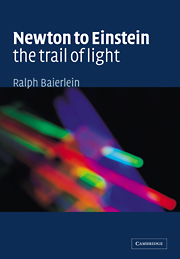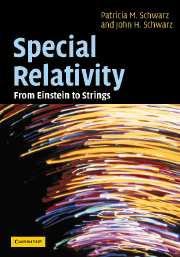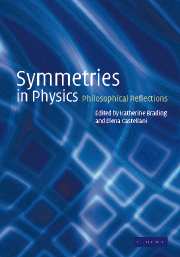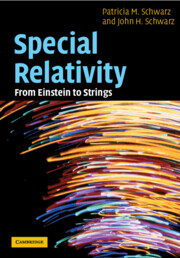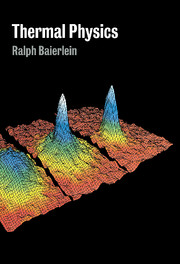Newton to Einstein: The Trail of Light
This undergraduate text takes the reader along the trail of light from Newton's particles to Einstein's relativity. Like the best detective stories, it presents clues and encourages the reader to draw conclusions before the answers are revealed. The first seven chapters describe how light behaves, develop Newton's particle theory, introduce waves and an electromagnetic wave theory of light, discover the photon, and culminate in the wave-particle duality. The book then goes on to develop the special theory of relativity, showing how time dilation and length contraction are consequences of the two simple principles on which the theory is founded. An extensive chapter derives the equation E = mc2 clearly from first principles and then explores its consequences and the misconceptions surrounding it. That most famous of issues arising from special relativity - the aging of the twins - is treated simply but compellingly.
- There is real need for a book of this type with increasing numbers of courses on the subject for non-science students
- Little mathematics - simply a knowledge of high school algebra - is needed to appreciate the text
- Attractive text design
Reviews & endorsements
' … I find Baierlein's approach highly congenial. Indeed I expect that some of the fascinating stories I learned from him and, more importantly, some of the excellent tricks he has taught me (particularly several neat and simple gedanken experiments that lead to relativistic momentum) will make my own course very much better. I can offer no higher praise. N. David Mermin, American Journal of Physics
'The exposition is absolutely sound and lucid. The discussion is never allowed to get too abstract, being filled with fine descriptions of modern experimental demonstrations of the fundamental relativistic effects. I could quite happily teach a course from this book, and I can recommend it warmly.' American Journal of Physics
'The book has many excellent features … includes some recent and quite interesting experiments not found in other textbooks … This is a fine textbook that should give students a real 'feel' for what physics is and how it progresses … It also makes these topics, which are inherently difficult, as easy as possible for students to grasp.' Joseph F. Mulligan, JCST
'Although written for classroom use, an excellent introduction to some of the important ideas of modern physics that should be both interesting and accessible to the proverbial intelligent general reader … Highly recommended for all college and university libraries.' K. L. Schick, Choice
'… a pleasure … it is a must for every library.' Peter Borcherds, European Journal of Physics
'This undergraduate text is an excellent introduction to some of the important ideas of modern physics that should be both interesting and accessible also to the general reader.' GLASS Science and Technology
Product details
August 2001Paperback
9780521423236
348 pages
246 × 175 × 20 mm
0.733kg
150 b/w illus. 5 tables
Available
Table of Contents
- Preface
- 1. How light behaves
- 2. Newton's particle theory
- 3. A wave theory of light
- 4. Interference
- 5. Electromagnetic waves
- 6. The photon
- 7. The wave–particle duality
- 8. Does the speed of light depend on the motion of the source of light?
- 9. The principles of the Special Theory of Relativity
- 10. Time dilation and length contraction
- 11. E=mc2
- 12. The twins
- 13. The Lorentz transformations
- 14. Space and time
- Glossary
- Appendices
- Index.

